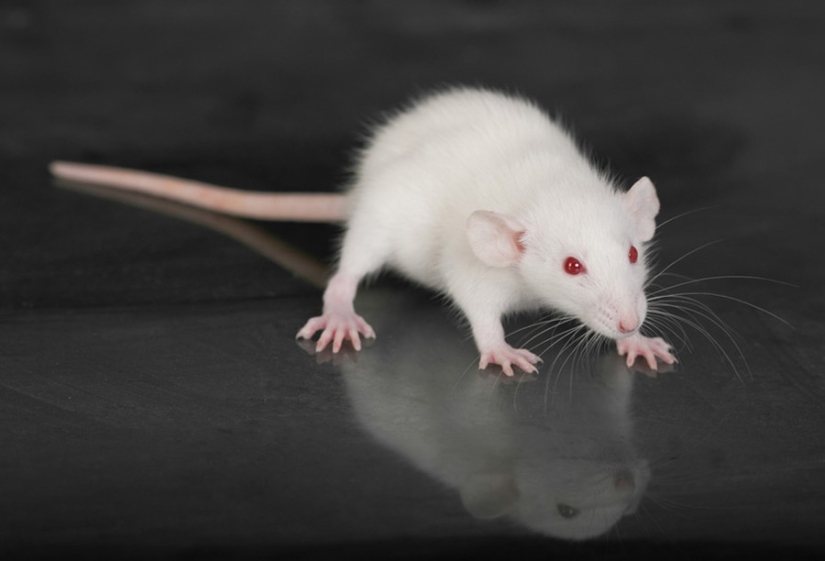9 of the most brutal psychological experiments in history
Categories: Health and Medicine | History
By Pictolic https://pictolic.com/article/9-of-the-most-brutal-psychological-experiments-in-history1.htmlWhat will happen if you tell a boy half his life that he is a girl? And if you torture a person with electric shock or force the subject to cut off the head of a live rat?


As a result of an unsuccessful operation, 8-month-old Bruce Roemer lost his penis. Psychologist John Money from Johns Hopkins University in Baltimore (USA) recommended parents to accept and raise a boy as a girl. So Bruce became Brenda, and John Money began to watch with interest what was happening. Everything was going relatively well until the parents told the boy-girl the truth. Bruce's life was crippled, he tried to commit suicide three times. Trying to get back to normal life, he changed his name and even got married. However, everything ended tragically: after his divorce from his wife, he took his own life. He was 38 years old.

Dr. Harry Harlow, fortunately, practiced only on monkeys. He took the cub from its mother, and kept it alone for a whole year. After the baby returned to his mother, he was found to have serious mental abnormalities. However, the obvious conclusion — the deprivation of maternal affection leads to problems — could be done in a less cruel way.

The experiment involved an experimenter, a test subject and an actor who played the role of another test subject. Before starting the experiment, the "teacher" was explained that the main purpose of the experiment was to discover new methods of memorizing information. A simple memorization experiment turned into torture: for each incorrect answer, the experimental actor received an electric shock. In fact, there were no electric shocks, but after each error, the voltage "grew" by 15 volts. If the "teacher" refused, the experimenter insisted, explaining how important it was for science. The results were nightmarish: 65% of the "teachers" reached the level of 450 volts. So Milgram managed to prove that a person, being under the authority of authority, is able to commit an act that is absolutely incredible for him in ordinary life.

Psychologists Mark Seligman and Steve Mayer divided the dogs into three groups. Nothing happened to the first one, the dogs of the second group were electrocuted, but the blows could be stopped by pressing the lever, and the third was unlucky the most. They were also electrocuted, but it was impossible to avoid it. After a while, the cages of the third group were opened, but none of the dogs even tried to press the lever: they perceived suffering as something already inevitable.

Wendell Johnson from the University of Iowa (USA) and his graduate student Mary Tudor in 1939 divided 22 orphans from Davenport into two groups. Some were told that their speech was flawless, others that they stuttered monstrously. In fact, all the children were talking normally.
As a result, most of the children of the second group developed stuttering, which persisted for life.

For two months, 9-month-old Albert was shown a tame white rat, cotton wool, a Santa Claus mask with a beard, a white rabbit, etc. But then John Watson, a doctor of psychology, behind the child's back, began to hit the metal plate with an iron hammer every time the boy touched the rat. As a result, Albert became afraid not only of the white rat, but also of cotton wool, Santa Claus and the white rabbit. The phobia stuck with him for the rest of his life.

Karin Landis from University of Minnesota in 1924 studied human facial expressions. Landis showed his students something that could cause strong emotions: he forced young people to sniff ammonia, listen to jazz, watch pornographic films and put their hands in buckets with frogs — and recorded facial expressions.
Landis then ordered the students to cut off the rat's head. Most of them agreed. It was not possible to find any patterns in facial expressions, but Landis rightly concluded that in a group under the influence of authority, a person is capable of a lot.

A group of monkeys were taught to inject themselves with various drugs.
Monkeys who took cocaine began to suffer from convulsions and hallucinations — poor animals pulled out their phalanges of fingers. Those who used amphetamine pulled out all their fur, and animals that were exposed to the simultaneous action of cocaine and morphine died within two weeks after the start of taking it.

Psychologist Philippe Zimbardo created a very realistic imitation of a prison in the basement of the psychology department, and divided the volunteer students (there were 24 of them) into "prisoners" and "warders".
At first, the students were confused, but the second day of the experiment put everything in its place: the uprising of the "prisoners" was brutally suppressed by the "guards".
Gradually, the control system became so tightened that the "prisoners" were not left alone even in the toilet. When the "prisoners" were asked what their names were, many of them called their number. The "prisoners" got so used to their roles that they began to feel like prisoners of a real prison, and the students who got the role of "warders" felt real sadistic emotions towards people who a few days ago were good friends for them.
The experiment was scheduled for two weeks, but it was stopped ahead of schedule for ethical reasons.
Recent articles

Leonardo da Vinci was accused of being fond of orgies. William the Conqueror, despite all his successes, was called a "Bastard" ...

Modesty? Decency? A sense of tact? No, you haven't heard! Just look at what the people from the selection below are doing! No ...

American documentary photographer Bruce Davidson came to the UK in 1960 for a couple of months on the assignment of Queen magazine. ...